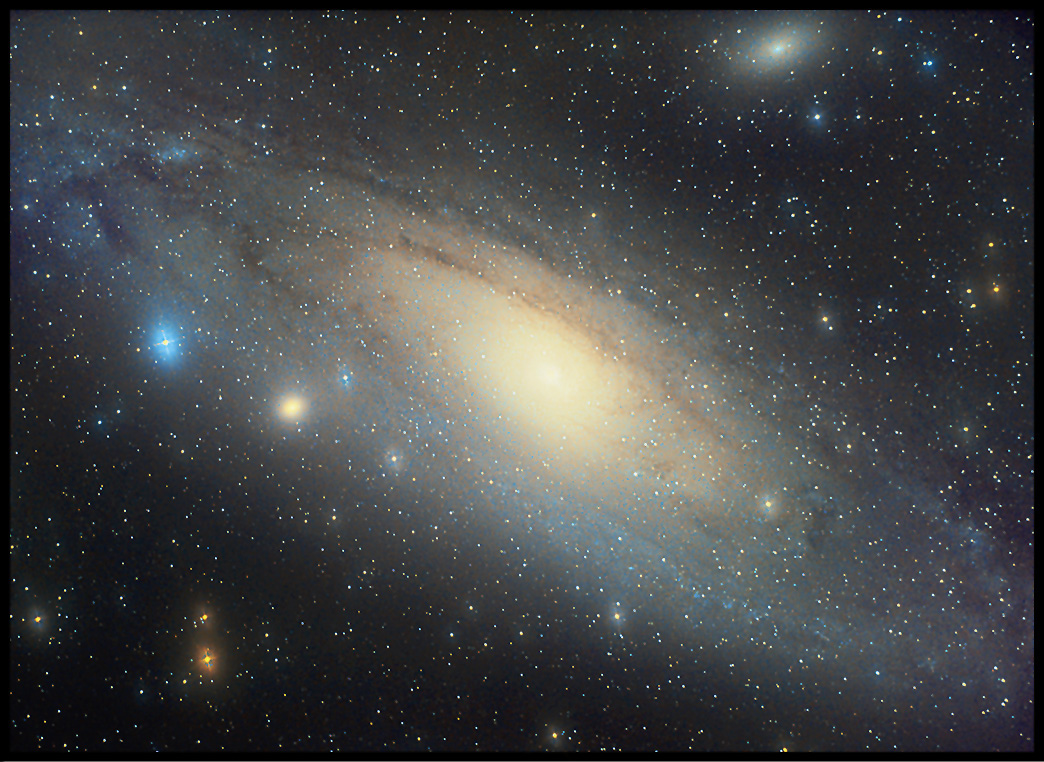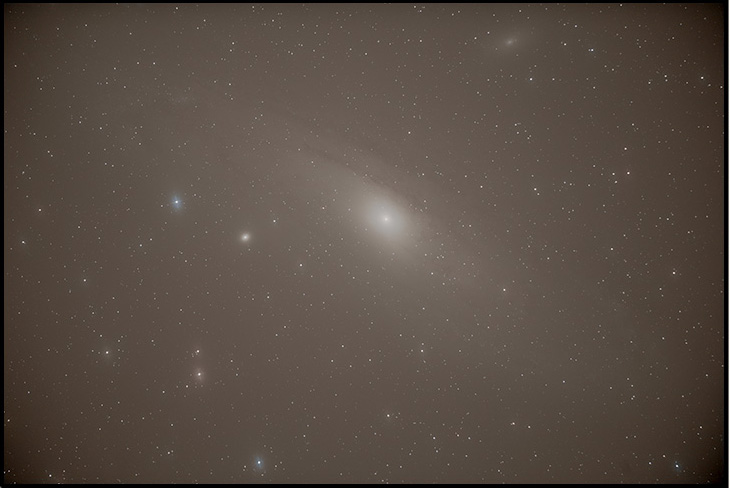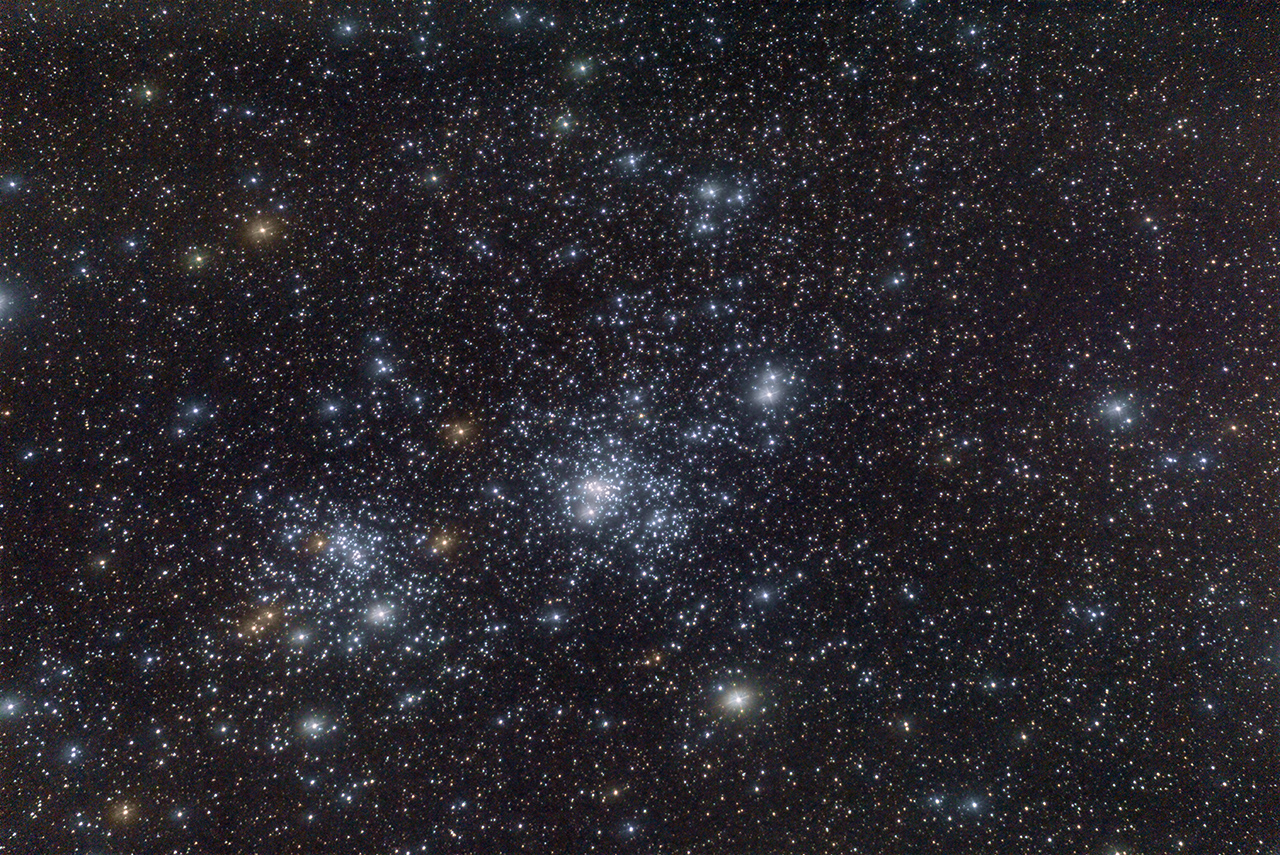10/03/2014. PixInsight Epiphany! I've been working through the wonderful video tutorials on Harrysastroshed.com; more ecstasy and links shortly. Here, first off, is a before and after pair of a short exposure (under 15 minutes) of M31 on a hazy night with dew-compromised optics:


M31 Before and after
27x30s
Canon 6D @ ISO 3200
Orion 10" F4 on G11
unguided (clearer photo on next page)
I calibrated, aligned, and stacked subframes in PixInsight using master bias, dark, and flat frames (also built in PixInsight). To show something close to the starting data (at bottom), I merely applied a histogram stretch, corrected a green tint, and slightly increased saturation of the stack. Then I worked the image over using several PixInsight "processes" (dynamic background extraction, color calibration, histogram transformation, and curve stretching mostly) to produce the image at top, which is a severe undersampling for the web. Right click and "view image" to see the "after" image better, but it's still a weakling compared to the 4k+ original, let alone to what I expect to get on a clear, dark night.
I can't say enough about the videos at Harrysastroshed.com, though I will probably try. After spending 18 months or so fumbling in PixInsight, I spent one morning watching and working through the "newbie" videos and have improved my technique more in a day than in the previous two years. As I told some friends, I knew where most of the buttons I needed were and had a good idea about what most of them did, but I lacked a good sense of how they played together and depended on one another. It was like knowing where the black and white keys were but not when to play them together or in what order. This is going to be fun!
10/04/2014. The Double Cluster in Perseus is a showpiece in any telescope with a field wide enough to show both clusters. The 6D behind the 10-inch Orion qualifies:

The Double Cluster in Perseus
9x30s, all else same as above
That's more PixInsight practice. The short series of raws was shot the same night as M31's. With some judicious masking, I cleaned up the background (maybe a little too aggressively) and suppressed dew haloes around the brighter stars (yes, they were worse). It's worth doing the right-click and "view image" thing as the profusion of sharp, colorful stars looks better in the larger version -- and better still in the full-size file. Note the absence of coma (Baader MPCC Mk3). Note also the dark void to the right in line with the two clusters: I wonder if a deeper stack of data, carefully presented, would show some interesting dust in that area. That's another in an endless series of projects for darker, clearer skies.
10/11/2014. PixInsight includes a benchmarking and performance analysis script. Their site lists various systems whose results have been uploaded. Mine is way down toward the slow end of the list, very close to the bottom. It took 7m39s to complete the benchmark; the fastest machines are Xeon based systems with 64GB of RAM and multiple terabyte SSD's; they run it in ~40s. Almost half my time was spent swapping files, so I used Crystal and Atto software to measure my HDD performance. Then I put the fastest drive on the fastest connection. Originally, the swap file was in the default user directory on C: (a Samsung Spinrite drive with max R/W speeds on the order of 68-70 MB/S). I designated two swap spaces, one on C: and one on G: (a 7200-RPM HD 1TB drive on an Esata connection offering 92-125 MB/S).
A 256GB SSD is on its way; it will either replace my C: drive or my G: work drive. It's a reality check: just how much real-world difference would several times faster discs make to PI and a slew of other programs? Odds on there are a couple of SSDs in my not too distant future.